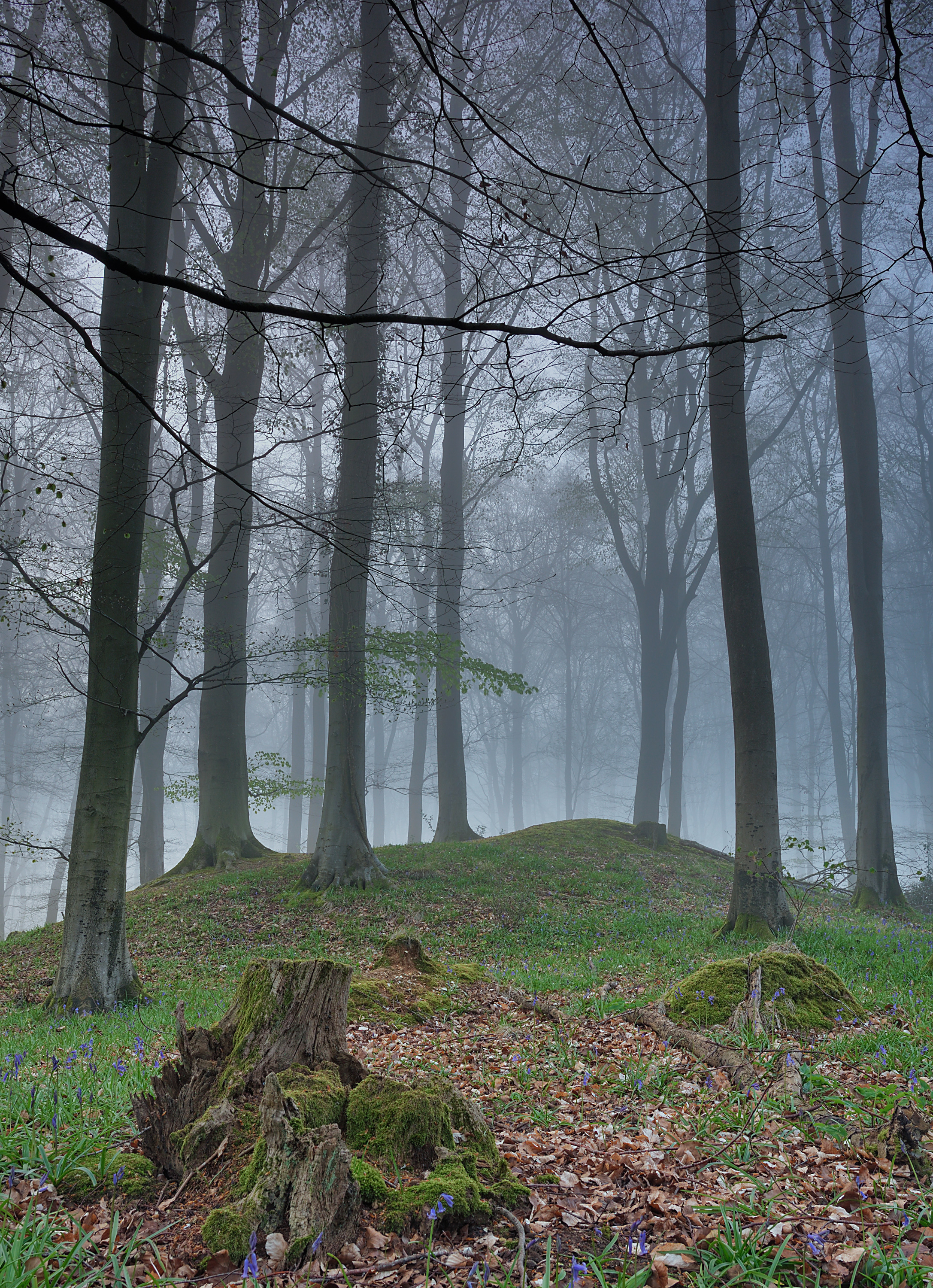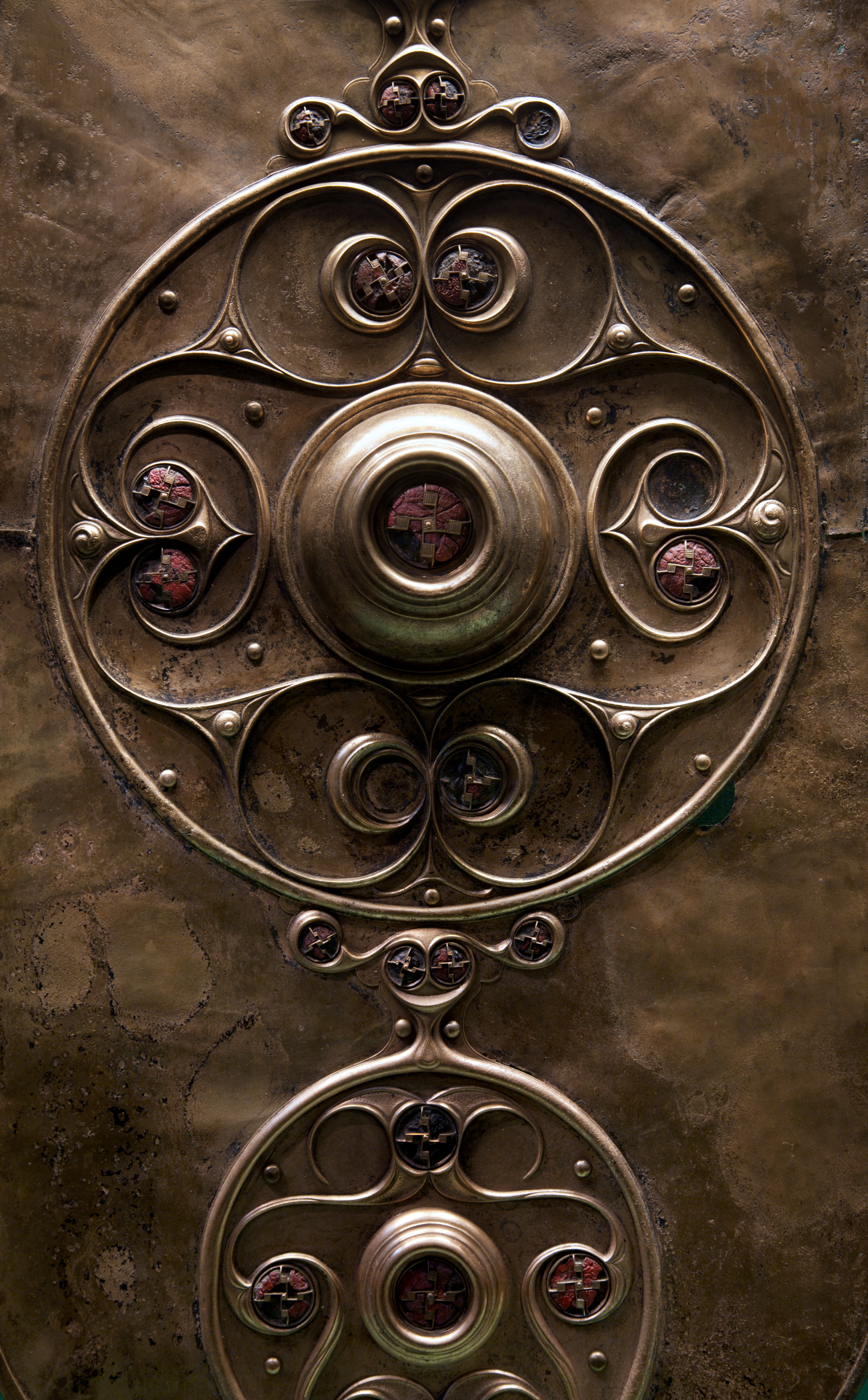|
Banjo Enclosure
In archaeology, a banjo enclosure is the name of a type of archaeological feature of the British Middle Iron Age. It is so named because in plan it consists of a small round area with a long entrance track leading inward from one direction. This layout gives it the appearance of a frying pan or banjo The banjo is a stringed instrument with a thin membrane stretched over a frame or cavity to form a resonator. The membrane is typically circular, and in modern forms is usually made of plastic, where early membranes were made of animal skin. .... The enclosure is defined by a low bank and ditch. The earthworks at the end of the track are sometimes turned outward, creating a funnel effect. The enclosure used to be thought of as a small farming settlement occupied around 400 BC to AD 43; however, because of the lack of finds relating to settlement it is currently thought to be a seasonal ritual centre where feasting occurred. Sources * * * * Iron Age Britain Archaeological ... [...More Info...] [...Related Items...] OR: [Wikipedia] [Google] [Baidu] |
Archaeology
Archaeology or archeology is the study of human activity through the recovery and analysis of material culture. The archaeological record consists of Artifact (archaeology), artifacts, architecture, biofact (archaeology), biofacts or ecofacts, archaeological site, sites, and cultural landscapes. Archaeology can be considered both a social science and a branch of the humanities. It is usually considered an independent academic discipline, but may also be classified as part of anthropology (in North America – the four-field approach), history or geography. The discipline involves Survey (archaeology), surveying, Archaeological excavation, excavation, and eventually Post excavation, analysis of data collected, to learn more about the past. In broad scope, archaeology relies on cross-disciplinary research. Archaeologists study human prehistory and history, from the development of the first stone tools at Lomekwi in East Africa 3.3 million years ago up until recent decades. A ... [...More Info...] [...Related Items...] OR: [Wikipedia] [Google] [Baidu] |
Enclosure (archaeology)
In archaeology, an enclosure is one of the most common types of archaeological site – It is any area of land separated from surrounding land by Earthworks (archaeology), earthworks, walls or fencing. Such a simple feature is found all over the world and during almost all archaeological periods. They may be few metres across or be large enough to encompass whole cities. Archaeological enclosures are typically representative of recurrent patterns of human activity throughout history through landscape. The absolute definition of archaeological enclosures has been debated over time. Some suggest that at a general level, enclosure (archaeologically) could be defined as the replacement of open-fields with privately owned-fields through walls, banks, and dividers. However, this definition has been criticised, as it appears many archaeological enclosures are not enclosed by a physical boundary. Enclosures served numerous practical purposes including being used to delineate settlement a ... [...More Info...] [...Related Items...] OR: [Wikipedia] [Google] [Baidu] |
United Kingdom
The United Kingdom of Great Britain and Northern Ireland, commonly known as the United Kingdom (UK) or Britain, is a country in Northwestern Europe, off the coast of European mainland, the continental mainland. It comprises England, Scotland, Wales and Northern Ireland. The UK includes the island of Great Britain, the north-eastern part of the island of Ireland, and most of List of islands of the United Kingdom, the smaller islands within the British Isles, covering . Northern Ireland shares Republic of Ireland–United Kingdom border, a land border with the Republic of Ireland; otherwise, the UK is surrounded by the Atlantic Ocean, the North Sea, the English Channel, the Celtic Sea and the Irish Sea. It maintains sovereignty over the British Overseas Territories, which are located across various oceans and seas globally. The UK had an estimated population of over 68.2 million people in 2023. The capital and largest city of both England and the UK is London. The cities o ... [...More Info...] [...Related Items...] OR: [Wikipedia] [Google] [Baidu] |
Iron Age
The Iron Age () is the final epoch of the three historical Metal Ages, after the Chalcolithic and Bronze Age. It has also been considered as the final age of the three-age division starting with prehistory (before recorded history) and progressing to protohistory (before written history). In this usage, it is preceded by the Stone Age (subdivided into the Paleolithic, Mesolithic and Neolithic) and Bronze Age. These concepts originated for describing Iron Age Europe and the ancient Near East. In the archaeology of the Americas, a five-period system is conventionally used instead; indigenous cultures there did not develop an iron economy in the pre-Columbian era, though some did work copper and bronze. Indigenous metalworking arrived in Australia with European contact. Although meteoric iron has been used for millennia in many regions, the beginning of the Iron Age is defined locally around the world by archaeological convention when the production of Smelting, smelted iron (espe ... [...More Info...] [...Related Items...] OR: [Wikipedia] [Google] [Baidu] |
Frying Pan
A frying pan, frypan, or skillet is a flat-bottomed pan used for frying, searing, and browning foods. It typically ranges from in diameter with relatively low sides that flare outwards, a long handle, and no lid. Larger pans may have a small grab handle opposite the main handle. A pan of similar dimensions, but with less flared, more vertical sides and often with a lid, is called a sauté pan. While a sauté pan can be used as a frying pan, it is designed for lower-heat cooking. History Copper frying pans were used in ancient Mesopotamia. Frying pans were also known in ancient Greece, where they were called () and teganon (τήγανον) and Rome, where they were called ''patella'' or ''sartago''. The word ''pan'' derives from the Old English . Before the introduction of the kitchen stove in the mid-19th century, a commonly used cast-iron cooking pan called a 'spider' had a handle and three legs used to stand up in the coals and ashes of the fire. Cooking pots and pan ... [...More Info...] [...Related Items...] OR: [Wikipedia] [Google] [Baidu] |
Banjo
The banjo is a stringed instrument with a thin membrane stretched over a frame or cavity to form a resonator. The membrane is typically circular, and in modern forms is usually made of plastic, where early membranes were made of animal skin. Early forms of the instrument were fashioned by African Americans and had African antecedents. In the 19th century, interest in the instrument was spread across the United States and United Kingdom by traveling shows of the 19th-century minstrel show fad, followed by mass production and mail-order sales, including instructional books. The inexpensive or home-made banjo remained part of rural folk culture, but five-string and four-string banjos also became popular for home parlor music entertainment, college music clubs, and early 20th century jazz bands. By the early 20th century, the banjo was most frequently associated with folk, cowboy music, and country music. By mid-century it had come to be strongly associated with bluegrass. Eventu ... [...More Info...] [...Related Items...] OR: [Wikipedia] [Google] [Baidu] |
Micheldever Wood
Micheldever Wood is a wood near the village of Micheldever, in Hampshire, England, about north-east of Winchester. It is managed by Forestry England. There are prehistoric remains from the Bronze Age and other periods in the wood, including a Roman villa. Description Its size is ; the M3 motorway runs through the western side. The wood consists mostly of beech trees, interspersed with some conifers. There is a car park; there are picnic places and two walking trails. There is a range of wildlife species, and muntjac deer can be found. Notable displays of bluebells can be seen in the spring."Micheldever Woods, Hampshire" ''Meandering Wild''. Retrieved 12 January 2021. History The area was part of the Royal Forest of Pamber in the medieval period. Part of the present Micheldever Wood wa ...[...More Info...] [...Related Items...] OR: [Wikipedia] [Google] [Baidu] |
Iron Age Britain
The British Iron Age is a conventional name used in the archaeology of Great Britain, referring to the prehistoric and protohistoric phases of the Iron Age culture of the main island and the smaller islands, typically excluding prehistoric Ireland, which had an independent Iron Age culture of its own. The Iron Age is not an archaeological horizon of common artefacts but is rather a locally-diverse cultural phase. The British Iron Age followed the British Bronze Age and lasted in theory from the first significant use of iron for tools and weapons in Britain to the Romanisation of the southern half of the island. The Romanised culture is termed Roman Britain and is considered to supplant the British Iron Age. The tribes living in Britain during this time are often popularly considered to be part of a broadly- Celtic culture, but in recent years, that has been disputed. At a minimum, "Celtic" is a linguistic term without an implication of a lasting cultural unity connecting ... [...More Info...] [...Related Items...] OR: [Wikipedia] [Google] [Baidu] |







